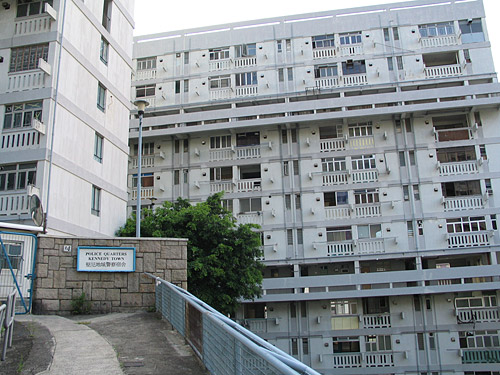Translation and Memory
Diana Thow is an MFA candidate in literary translation at the University of Iowa and co-editor of the on-line journal eXchanges. A translator from the Italian, she has completed her thesis “Translating Resistance: the poetry of Amelia Rosselli.” Her work has been published in The Columbia Review, House Organ and Words Without Borders.
Memory is certainly one of the most compelling and elusive faculties that we possess, and along with the imagination it is one of the most potent and problematic tools at a writer’s disposal. Memory often figures in the process of writing and shaping writing—specifically when it comes to the construction of a narrative. I want to examine how the pull of memory affects the translator as she sits down to work, and suggest that it is not unlike the pull of memory on a writer of nonfiction. But instead of memory of a person or an event as the building blocks of a narrative, the memory that the translator builds upon is the memory of a particular text, author, and culture. As writers we learn how to best filter our memories and visions onto the page, we learn when and how to honor them and when and how to dismiss them. Though the translator’s process as a negotiation of memory is my chief concern here, my hope is these issues will stir up resonances with nonfiction and other forms of writing as well.
When we think of translation we often think of the phrase lost in translation; we often think of loss. Translation is therefore well known for its failures—what it reaches for but ultimately cannot retain. The intangible is seductive, however, and impossibility is one of the things that make translation so compelling a task. The inevitable loss in the movement from one language to another has recently been reclaimed as a positive force, rather than a crippling one. Foreignizing theorists celebrate it as the location of difference, newness, strangeness, something to be highlighted instead of dismissed, and the phrase is sometimes refigured as found in translation. But regardless of how this space is conceptualized or inverted by theorists and practitioners, no one denies that there is certainly always a gap, between cultures and languages, and that bridging this gap is not an easy task.
The phrase lost in translation is rooted in nostalgia for an original text. In the essay “Translation as Challenge and Source of Happiness” Paul Ricoeur positions translation in relation to the dual paradigm of work found in the writings of Freud: the work of remembering and the work of mourning, and argues that the true task of the translator is to accept their loss and move on. In this vision, the translator is mourning more than just the memory of the original text; they are mourning a loss of the “perfect translation.” Ricoeur suggests that it is only once we overcome this anxiety of creating a flawless work that we can begin to do our real work as translators.
Regarding flaws, I have a confession to make: I have a hard time imagining Shakespeare in a language other than English. Though this is an embarrassing irony it is also a useful one, because it allows me to understand why, when I discuss my translation projects I sometimes hear Impossible! It can’t be done! Why bother! I cannot resent this response, because it comes from a crippling proximity, an irrational affection for the material discussed. I am this way with Shakespeare. I cannot begin the process of mourning, of distancing myself from his text in the way a translator must, through the veil of another language. I cannot mourn or acknowledge his loss, for he is often present: his language is at the root of the language that I speak and think and write in. Yet because I know the distance, the impulse behind translation— I have felt it while reading other authors and other texts— I can sympathize with the translator of Shakespeare and I can admire her work as necessary and impossible, and I salute her as she acknowledges the impossibility of her task and carries on.
Let me look at translation and memory, and the process of proximity and distance, in more practical terms. How I see it, ideally, is this: We read a text for pleasure in a language that is not our own. We are simply readers. There is nothing like the text in English, or there is something similar, but we don’t care. We decide to translate this text; we want to share it with people in our native tongue. We sit down to translate. Now comes the horrid, exciting, painstaking part: we take the text word by word, sentence by sentence. We look up the definition of words we are sure we know, just to be extra sure. We wrestle the text into English: grammar, syntax, diction. In this process, if we are especially good translators, we will keep the memory of the original in mind as we translate. But we have to keep our distance from it or we will throw our hands up in despair: Impossible! Why bother! The gaze of the translator is so minute, so focused and intense, that the larger original text, and our experience of that text in the foreign language, becomes only a vague memory as we begin to delve into our new role and our new obsessions: words and passages that flowed so seamlessly in the original become distant shades, and in the foreground we are stuck with an impossibly inelegant reflexive verb, something that will never work in English. But we must keep in mind both the memory of the text and our vision of the text in a new language. And within this process of leaving and returning, celebrating and mourning, is the seed of new creation.
•••
I’d like to now take a small detour to look more closely at this pair of words I’ve been using, proximity and distance. I’ve been trying to use them instead of the worn out pairing of fidelity and infidelity, a pair of terms that are often thrown about in discussing translation. Cast through the filter of memory and narrative, one can be faithful to a memory in a certain essay or story or unfaithful to it as well. But the antiquated system of values that the words imply has become necessarily convoluted: something that is faithful is not necessarily privileged over something deemed unfaithful. And while this is different from being close to a particular memory or far from it, I prefer to use these terms reconfigured as spatial constructs instead of moral, gendered ones, as by now, in translation discourse particularly, the gendered associations that the pairing of fidelity/infidelity (as in the oft-repeated French saying, a translation is like a woman, either beautiful or faithful) are so deeply problematic that they needs to be reconfigured in both casual and theoretical discussion.
Therefore, proximity in translation, in this discussion at least, is a translation that stays in close proximity to the memory of the text in the original language. By sticking closely to this memory, of our experience of reading the original text, translators often convince themselves that they are creating a more “accurate” translation. The concept of “accuracy” is an enticing misconception in the practice of translation, closely rooted in the belief that a perfect equivalence can be found between languages, cultures, and literatures. Ricoeur, among others, reminds us that perfect equivalence is not only impossible, it is undesirable.
•••
Ultimately, it is important to remember that a translation is, first and foremost, one interpretation of a given text. As Lawrence Venuti writes, these interpretations are always informed by the cultural climate in which they were constructed: they are inscriptions of a particular time, place, and set of cultural or artistic values. This brings me to one last important form of memory that the translator (often) must negotiate: the memory of past translations. With Dante, for instance, there are entire bookshelves of English translations that have accumulated over the years. What is historically lacking in the Dante translator’s approach, amidst this multiplicity of thought surrounding the Commedia, is this precise understanding: an acknowledgment that there can be no “definitive” translation of Dante, and that Dante as a writer invites a multiplicity of interpretations and translations. The translator, then, must see her work as a version, a reading, an interpretation, linked to time and place, in doing so she accepts the collaborative nature of translation: her voice among a chorus of voices.
Though there is more to say on this subject, I’ll close here. As with voice, the beauty of translation is that it is both temporal and individual. As with writing, the translator must first acknowledge the overwhelming impossibility of her task. As we translate we negotiate the memory of an original text, author, culture, we seek harmony between proximity and distance in regards to that memory. And though the ideal vision eludes our grasp, still we reach for it. It is in this liminal space of longing that we sit down to translate.
Ricoeur, Paul. “Translation as challenge and source of happiness.” Trans. Eileen Brennan, On Translation, London and New York: Routledge, 2006. 3-10. Venuti, Lawrence.
“Retranslations: the Creation of Value.” Translation and Culture. Ed. Katherine M. Faull, Lewisburg: Bucknell University Press, 2004. 25-38.
6.1 Spring 2008
- Editorial
-
SPECIAL SECTION: NON-FICTION NOW
-
A MALAYSIAN BOOKSHELF
-
VAN CAM HAI
-
LAWRENCE PUN
-
PUJA BIRLA



